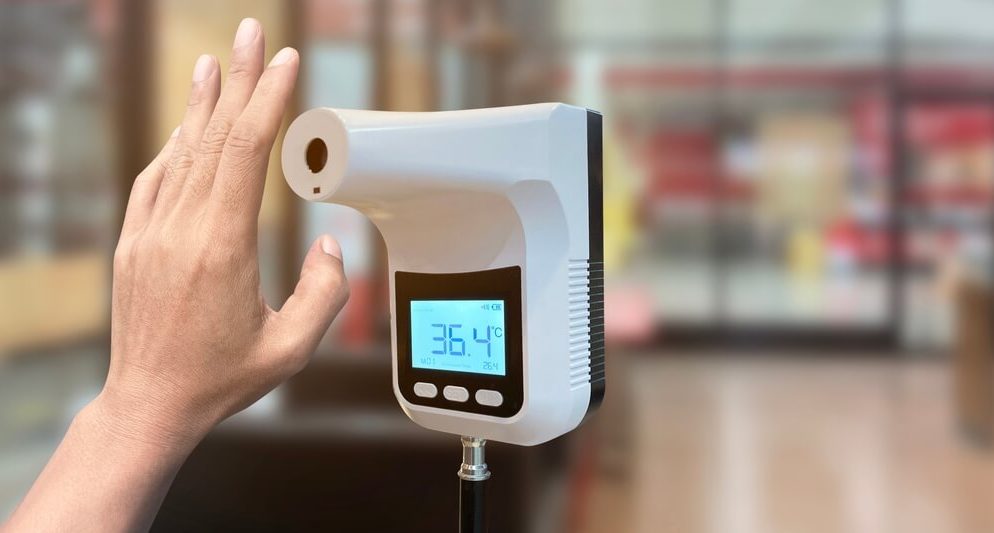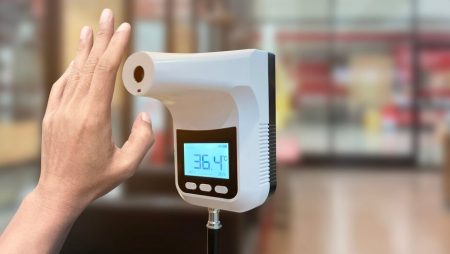



Get new exclusive access to healthcare business reports & breaking news




The last couple of years have been very challenging for the healthcare industry. The COVID-19 pandemic has brought science and healthcare to the forefront. Budgets quickly got squeezed, key healthcare equipment was out of stock, and supply was disrupted. In a matter of days, the whole healthcare system was suffocating, and healthcare workers were overwhelmed.
The healthcare system of most countries around the globe was unable to cope with the disruptions caused by the pandemic. The coronavirus exposed many longstanding gaps in the healthcare sector, such as our inability to share patient data across multiple platforms. Luckily for mankind, most of the loopholes in the healthcare industry can be addressed through a sharper use of technology.
In this article, we take a look at 5 key technology trends that will transform healthcare services in 2022 and beyond.
Telehealth is not a new concept and has been around for a while. However, it is only now that this technology is growing in popularity. Rapid technology advancements, along with the coronavirus pandemic, have drastically increased its adoption: a study by McKinsey reveals that the use of telehealth has increased 38 times, compared to pre-coronavirus statistics. This suggests that more and more people are taking a proactive role in their health.
Patients can now discuss their medical queries anytime through digital portals, with a specialist on the other end of the line. This increase in self-care can be attributed to its convenience and accessibility for patients. Similarly, telehealth is also useful to healthcare providers looking to reach patients in remote areas. This is especially true for patients with chronic conditions who may not be able to travel due to a risk of complications.
Telehealth is an integral part of the future of healthcare. More healthcare organizations are starting to invest in digital health solutions. As this technology progresses, these portals will offer a variety of self-service functions and improved communication between patients and healthcare providers. In the near future, wearables and remote patient monitoring programs that collect and transmit patients’ vital signs from afar are expected to go mainstream.
Key takeaway: With its fast growth, the regulatory landscape for telehealth is likely to be regularly amended over the next decade. Healthcare providers must be ready to handle issues of connectivity, efficacy, security, and privacy.
For years, hospitals have struggled to enforce hygiene practices. According to the Centers for Disease Control (CDC), about 1.7 million infections each year are caused by Healthcare Acquired Infections (HAIs) in U.S. hospitals. For instance, patients who get surgical infections have to stay in the hospital on average 6.5 more days, are five times more likely to be readmitted after discharge and have a 2x higher chance of dying. Overall, HAIs result in 99,000 associated deaths every year.
Cleaning in hospitals is time-consuming, labor-intensive and usually makes up a significant portion of the operating expenses each year. Yet, enforcing good hygiene in hospitals is crucial to reduce HAIs. As technology advances, more sophisticated cleaning methods are reaching the market. For example, robots equipped with germ-killing UV light are a promising tool for surface disinfection.
The hospital of the future should be clean and germ-free. Yet, today’s hospitals are not designed to accommodate autonomous disinfection robots and use them to their full potential. In an ideal scenario, these unmanned robots would be able to interact and clean their environment without human assistance. Additionally, these robots will be able to document disinfection results, which can be used as a sign of quality assurance.
Key takeaway: Future hospitals should be designed to be easy to clean and disinfect. Architects and planners should consider including robotic disinfection in their architectural designs.
Artificial intelligence (AI) is developing quickly and will likely be essential in the coming decade. AI can help find patterns, analyze data, and make predictions which will lead to better practices and patient care. A pre-COVID-19 survey by Deloitte found that 75 percent of healthcare organizations with annual revenue of $10 billion have already invested over $50 million in AI projects and research. Moreover, 73 percent of all healthcare organizations plan to increase their investment in AI development in the near future.
In parallel, many healthcare organizations have also been implementing automation technology to reduce clinical burden. For example, staff scheduling apps are popular alternatives to traditional pen and paper record-keeping books or excel sheets. Automation can improve the efficiency of work processes and greatly reduce human error in the healthcare sector. Also, with the rise of natural language processing, AI devices can be controlled with touch-free interactions.
Artificial intelligence and automation are trends that are steadily making their way into the healthcare sector and look poised to go on. A report from Statista highlights that as of 2020, 34 percent of large healthcare organizations have already implemented automation solutions. When combined, AI and automation solutions can potentially give your organization an edge over the competition.
Key takeaway: AI and automation can open the doors to a more productive operational model. Healthcare organizations implementing these technologies expect to achieve more efficiency, improve their service delivery and reduce costs.
The healthcare sector has seen the emergence of Augmented reality (AR) and Virtual reality (VR) in the past decade. A report from Goldman Sachs Global Investment Research forecasts that the healthcare sector will be among the top 3 industries to adopt VR technology by 2025. These technologies enable patients and healthcare workers to interact with simulated environments customized for medical education. These include pain management, rehabilitation, or even surgery training simulations.
According to a survey by Accenture, 82 percent of healthcare professionals believe that VR offers both medical students and medical staff a suitable environment for learning. AR and VR are especially useful to learn about complex medical procedures and practice safely in a virtual environment. Also, these immersive technologies help medical professionals understand conditions before seeing the patient face to face.
Virtual reality and augmented reality technologies are poised to gain traction in the healthcare sector over the coming decade. A study reports that 62 percent of patients believe VR can be a solid alternative to traditional healthcare. The global market for VR is forecasted to reach $2.2 billion by 2027, up from $336.9 million in 2020.
Key Takeaway: AR and VR may still have a long way to go, but these technologies have already shown they can positively disrupt the healthcare landscape. Both patients and medical professionals are keen to adopt these technologies.
The recent coronavirus pandemic pointed out the shortcomings of our healthcare system. One of the major flaws the current healthcare sector faces is the difficulty to keep up with real-time information. For example, keeping track of COVID-19 vaccine shipments and giving patients separate inoculations will require healthcare providers to use big data analytics and real-time tracking platforms. Failing to accurately keep tabs on all this information can lead to potentially hazardous situations, such as administering the wrong inoculations to a patient.
Even if the coronavirus suddenly disappears from the world, we will still be at risk of future pandemics. Having the ability to collect, store, analyze and secure data at scale is essential to hinder any upcoming pandemic. Accurate record-keeping enables epidemiologists to predict where outbreaks are likely to happen. This information is used to help vaccine makers decide when to focus production, and health officials to know which areas they should prioritize.
Developing data analytics platforms that are able to share patient information across different platforms, to different parts of the world, and provide real-time information, is crucial for general public health. Before coming to a final interoperability framework, there will likely be several updates, regulations, and policies on how patient health data should be handled.
Key Takeaways: In order to eradicate vaccine-preventable diseases, being able to seamlessly collect and share data is critical. This includes understanding the populations that need vaccinations and where they live, as well as how these populations can be reached most effectively.
Even if the last 2 years have been very challenging for the healthcare sector, the pandemic has nonetheless exposed the areas that should be improved. All the knowledge gained by healthcare organizations has encouraged them to re-evaluate and upgrade their technology.
Similarly, patients have shown a strong willingness to adopt novel health solutions. In some cases, telehealth services saw an increase of over 4,000 percent in non-urgent video visits. Surveys also point out that 73 percent of digital health adopters are likely to keep using these same services in the future.
Going forward, new technologies, digital health innovations, and data analytics are expected to be used to improve care quality and the overall patient health. Embracing the different technologies discussed in this article will shape the healthcare sector of the future. Hopefully, we will be better equipped and prepared to face any upcoming challenges.
Derek Jones
Derek spearheads key initiatives at Deputy, a global workforce management platform for employee scheduling, timesheets and communication. With a focus on healthcare, Derek helps business owners and workforce leaders simplify employment law compliance, keep labor cost in line and build award-winning workplaces. Derek has over 16 years’ experience in delivering data-driven sales and marketing strategies to SaaS companies like MarketSource and Griswold Home Care.